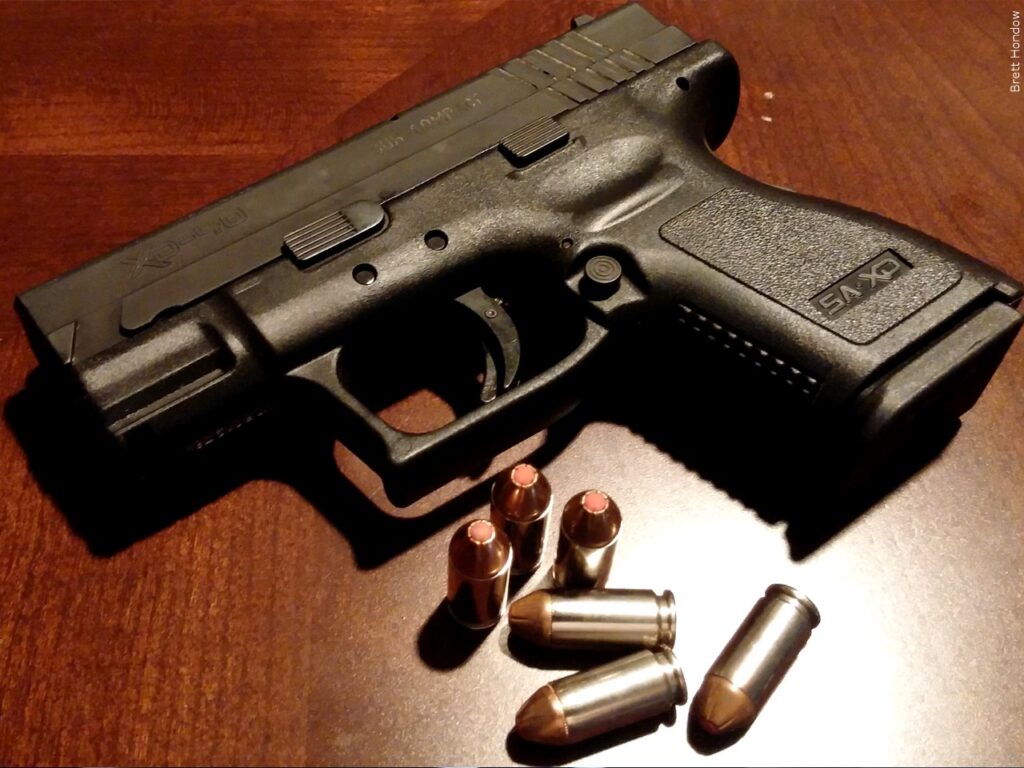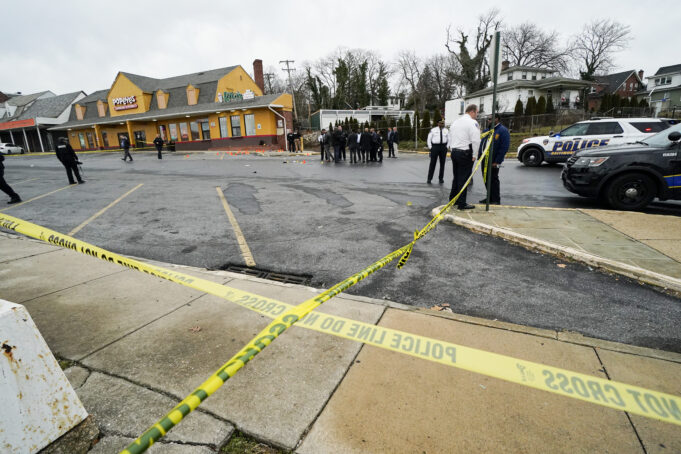by Hazel Trice Edney
Sierra Jenkins, a former news assistant for CNN and reporter with the Virginian Pilot newspaper, was headed for the peak of her career. Her colleagues praised her for her journalistic acumen and her respect for reporting excellence.
But when her editor tried to call her to assign her to cover a shooting in Downtown Norfolk, Va., on March 19 last year, he could get no answer. Way out of character for this young journalist, known for her professionalism and accountability, there would be a reason for her non-response that would shock the world. Sierra Jenkins, 25, was one of the victims of the very shooting that her editor sought her to cover.
As her phone rang, she lay dead outside a popular pizza restaurant, felled by a bullet shot during an argument over a spilled drink. She was not involved in the dispute and the bullet was never intended for her. Nor was it intended for 25-year-old former high school honor student and football linebacker Devon Harris, also killed in the gunfire that night. The news devastated the community, their co-workers, family and friends.
Fifteen months later, on June 6 this year, only about 90 miles away, 18-year-old Shawn Jackson was also a promising young Black man. Having just graduated from Huguenot High School 30 minutes earlier, he lay dead outside Richmond’s Altria Theatre alongside his stepfather, Renzo Smith, a U.S. Army veteran. Both were killed by bullets from a gun wielded by a 19-year-old man who targeted the two men, according to police.
Whether the shootings were unintended or criminally intended for their victims, across the nation coast to coast, Black people are disproportionately dying, being wounded by or mentally suffering from gun violence. According to the Centers for Disease Control and Prevention, the leading cause of death among America’s Black children and young adults ages 1-44 is homicide by firearms.
Amidst this crisis, sociologists, Black mental health experts and medical workers say one thing is certain: The travesty has taken its toll on Black mental health—largely through fear, stress and grief—while the gun industry is reaping billions of dollars.
“The volumes of guns are now so high that many people just use a gun to solve conflict when even that person might have tried something different in the past,” says psychiatrist Rahn Kennedy Bailey, chairman of the Department of Psychiatry at Louisiana State University in New Orleans. “Our streets have been flooded with guns, a lot of guns. Where people have always had conflicts and had to resolve it in different ways, now they might grab you and shoot you. … The sheer volume of guns are so high, a lot more violence happens.”
According to a report by the Center for American Progress, between 1986 and 2008, an average of 3.8 million firearms were manufactured in the United States. The report titled, “The Gun Industry in America: The Overlooked Player in a National Crisis,” then illustrates the rapid annual growth of the gun proliferation. The 3.8 million between 1986 and 2008 “doubled to an annual average of 8.4 million firearms per year from 2009 to 2018,” the most accurate recent count by the ATF.

Everytown.org, a gun violence prevention organization, reports that Black people “experience 12 times the gun homicides, 18 times the gun assault injuries, and nearly three times the fatal shootings by police of White Americans.”
But, the disparate impact on the Black community is not new. It has been long known by experts that Black Americans—just as in the cases of most other tragic social statistics—bear the brunt of the pain of gun violence physically, mentally and emotionally; even indicating that gun violence dramatically affects educational outcomes such as test scores.
A study led 20 years ago by Hampton University endowed Professor Zina T. Mcgee, concluded that “Studies based on children raised in communities in which violence occurs have shown that direct encounters with violence (either as a victim or witness) increase the likelihood of experiencing anxieties, depression, social withdrawal, and difficulties in concentrating.”
Based on information collected from Black American youth “residing in areas plagued with violence and crime,” Mcgee’s 2003 study states that “With regard to social class, research indicates that low socio-economic status serves as one of the many environmental factors that can contribute to the use of violence to resolve conflicts.”
Despite credible conclusions that most gun-related homicides occur in low-income Black communities, it is clear that without the proliferation of guns the shootings would not be possible.
U. S. Rep. Bobby Scott (D-Va.), who held a “Gun Violence Prevention Roundtable,” in 2019 following an incident in which 13 people were killed in a mass shooting, listed a string of Virginia killings and gun injuries near the area where Sierra Jenkins and Devon Harris were killed. “We have evidence available to show that affective policies can reduce these shootings,” Rep. Scott says.
“When they are implemented, background checks work. Every day, background checks stop nearly 250 dangerous individuals from being handed a firearm. However, these same people can go to a gun show and purchase a firearm without any background check. Virginia laws are among the worst in the country,” he said, describing the commonwealth as the “gun-running capital of the world.”
Still, good old fashioned home training that instills non-violent morals and values is the best way to deter violence, says Dr. Bailey.
“The respect for life, how your parents raised you matter. If you believe human beings are valuable, you wouldn’t shoot someone at all let alone shoot them for a non-violent offense,” Dr. Bailey said. “But in many shootings now that are not self-defense or life or death, people are said to have a beef over something that’s non-violent and the person escalates it to violence by grabbing a gun and shooting someone.”
Parents, teachers and school officials could be in on this training in conflict resolution, Dr. Bailey says.
“Children are on the playground bumping into each other all the time. How teachers and counselors handle it goes a long way in teaching a little kid that it’s normative to jump around and bump into each other. But it’s not normative to bump into each other and knock them down and not try to help them or try to offer them assistance. Those are the kinds of things that start the process.
The other thing is you can also do roleplay of arguments so that young people can recognize what you should and should not say in the middle of a really big argument. Young men are often 18, 19, 20 years old; so they can drive and move around. They just may not know how to handle conflict. We should be very involved in this process.”
Distributed by TriceEdneyWire.com













